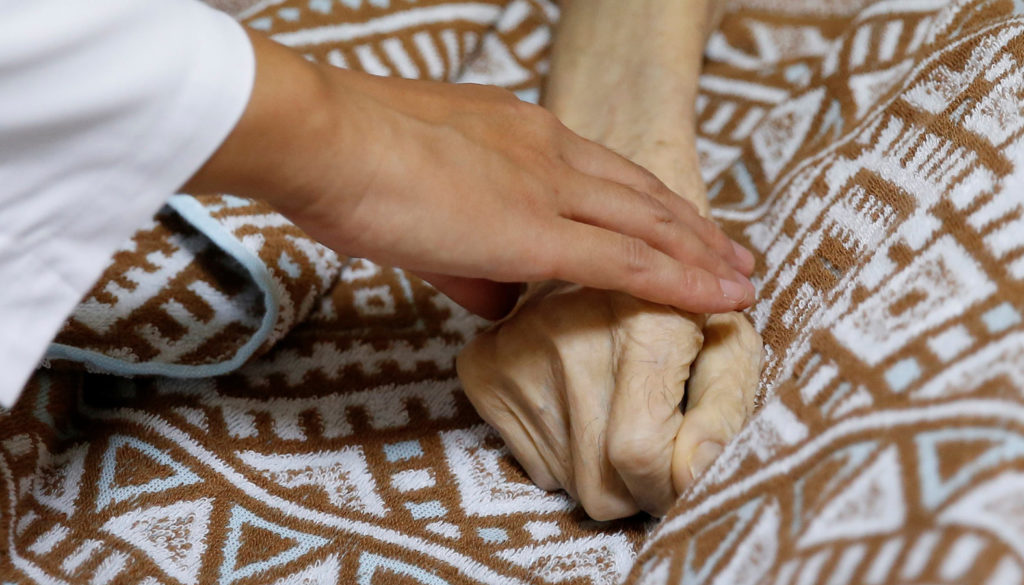By now, you’ve likely heard at least a few of the horror stories coming out of Canada. Upset about not getting much-needed spinal fusion surgery for several years? As a Canadian you could now be offered (so-called) “medical aid in dying.”
Having terrible physical reactions to the paint or other substances in your public housing? You could be denied a petition to move to a different building — but be approved for medical aid in dying.
Need a wheelchair ramp into your home or be forced into an unacceptably poor assisted-living residence? Well, there may not be money for the former — but, you guessed it, you could be invited to kill yourself instead.
As if this wasn’t bad enough, Canada will usher in a new phase of physician-assisted killing in March 2024 — one focused on persons who are disabled. Yes, you read that right. State-sponsored killing of disabled citizens. And because the possibilities of who counts as disabled are virtually endless — it will include killing those with body image disorders like anorexia nervosa.
Those of us who came of age in the 1990s — a time that was particularly sensitive to the plight of those with disabilities — can hardly believe it. At that time, Western culture knew the way to accompany people facing this kind of suffering was not to affirm their “autonomous” “choices” — but rather to work hard to help them to see that their lives had meaning and dignity despite their very real and even catastrophic problems.
Canada is a cautionary tale for where the U.S. could end up. Despite narratives to the contrary, assisted suicide in the U.S. isn’t primarily about sympathetic cases like that of Brittany Maynard, who was facing a painful brain cancer death. Indeed, advances in palliative care and sedation have helped to minimize that reasoning.
Don’t believe me? Consider Oregon, which has had physician-assisted killing for decades. Physical pain and suffering don’t even make the top-five reasons people request such a violent end. Which ones do? Fear of loss of autonomy, fear of loss of enjoyable activities, and fear of being a burden on others are some of the most consistent.
We can certainly recognize our secular, capitalist culture at work here, with its individualistic, self-made, consumerist, and independent vision of the human person. We’ve seen this play out when it comes to abortion — but it also plays a huge role in why Americans request physician-assisted killing.
Though we haven’t yet reached Canada’s levels of supply and demand, the U.S. practice is focused on people who are fearful of the kind of life they expect to live leading up to their deaths. Given what our culture tells them about what kinds of lives are worth living, which ones are the most dignified, it’s hard to blame them.
I was discussing these matters with some of my students — novices of the Franciscan Friars of the Renewal — at their friary in Newark, New Jersey recently. I told them that I was likely going to write a book on these matters. As we talked through what the book should focus on they made an excellent and revealing point: The culture in which they are being formed as Franciscan friars is close to the opposite of the culture leading toward assisted suicide.
As they die to their individualistic selves (in a Christian sense of community), embrace poverty (the opposite of consumerism), and focus intensely on a prayerful relationship with God, the very ideas and assumptions that lead most people in the U.S. to request physician-assisted killing no longer hold sway.
Fear of loss of autonomy and of being a burden on others? Give me a break, say the friars. We have constant reminders of our deep dependence on others and our lack of autonomy as contingent, finite human beings. Fear of loss of enjoyable activities? These friars — despite not taking vacations or playing weekly basketball games — are some of the happiest people around. They enjoy a deep experience of community with one another and their neighbors in Newark, but also an intentional relationship with God.
It is this vision of the human person that shapes a Catholic understanding of dying well — that is, dying in community with God and one another. Indeed, whole books have been written on the particular ways monks die. This vision will be at the heart of the counterculture we are called to build as we resist the trends moving us toward physician-assisted killing.
Though such a calling may seem rather dramatic, as it focuses on the part of our lives which leads us back to our Creator, it is really just another part of what Catholics are called to do more generally: live as Christ did. That is, live in loving and dependent community with others and in constant awareness of the impossibly intimate relationship we have with our heavenly Father — a relationship that, one day, will be face-to-face.

